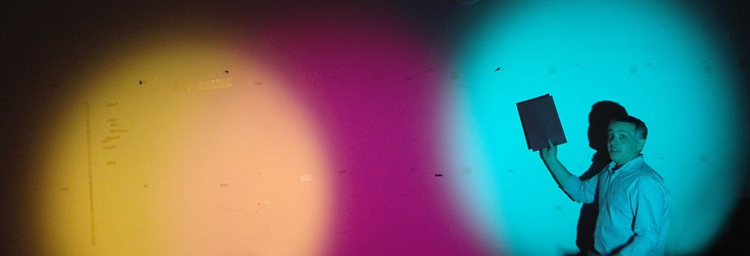Ezequiel Nóbili, a Spanish based lighting designer with a long career in live entertainment and television, recently hosted a “Filters” workshop for The Superior Technical School of Architecture of Madrid at LA Universidad Politécnica de Madrid. The 10 hour workshop consisted of three modules that covered both theoretical and practical knowledge, including:
- A brief summary of the importance of light in plastic arts and its relationship with social, cultural, artistic and technological aspects.
- A viewing of a live show, followed up with discussions with multiple departments involved in the production.
- Hands-on experimentation resulting in a team project creating a design that utilized the theories they’d learned throughout the workshop.
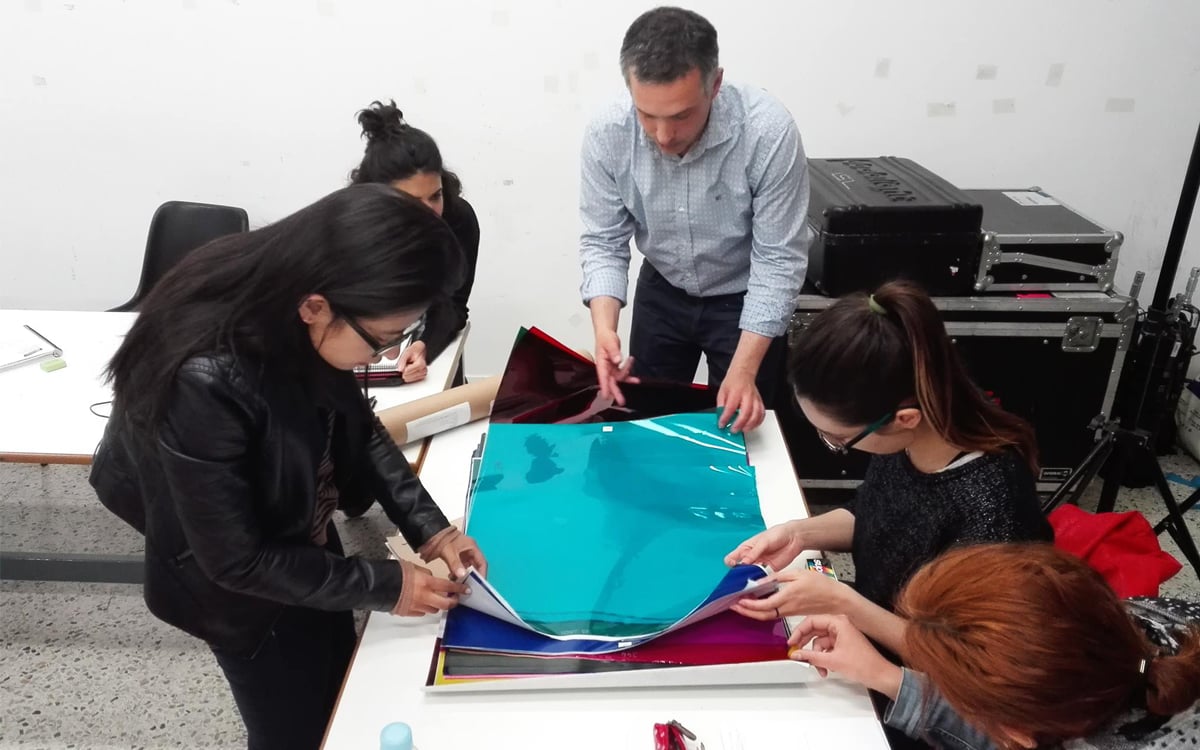
Ezequiel Nobili and his students flicking through Rosco Supergel filters.
As a part of the Master in Ephemeral Architecture, directed by Carmen Blasco, Nobili’s workshop incorporated 20 different Rosco Supergel colour filters to demonstrate various colour theories and have students “experience and understand light and colour through the emotions and sensitivities that affect us as photosensitive beings.” In attendance were students & designers that had a bachelor's degree in architecture or interior design and were looking to specialise in new disciplines such as ephemeral, interactive, artistic, social or participatory architecture.
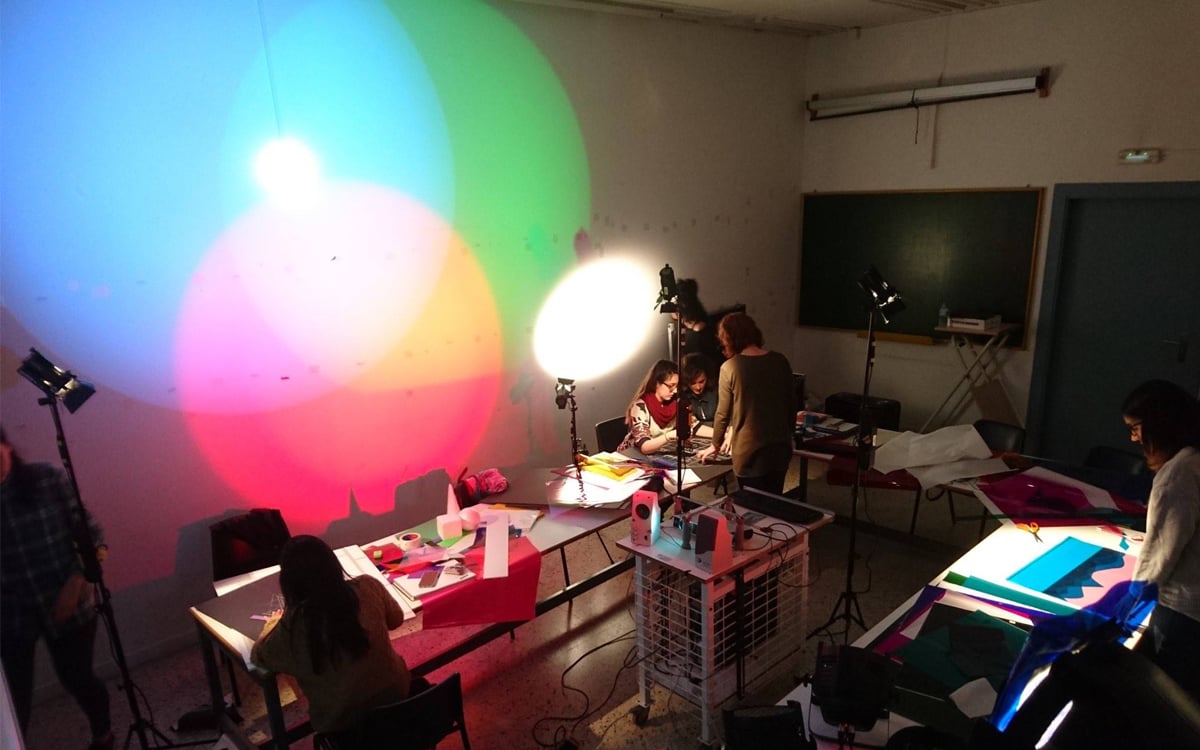 While the workshop was developed for architects and interior designers, many aspects were driven by the basic, core tenants of lighting design and colour theory. The attendees first used the Supergel filters to experiment with additive and subtractive colour mixing.
While the workshop was developed for architects and interior designers, many aspects were driven by the basic, core tenants of lighting design and colour theory. The attendees first used the Supergel filters to experiment with additive and subtractive colour mixing.
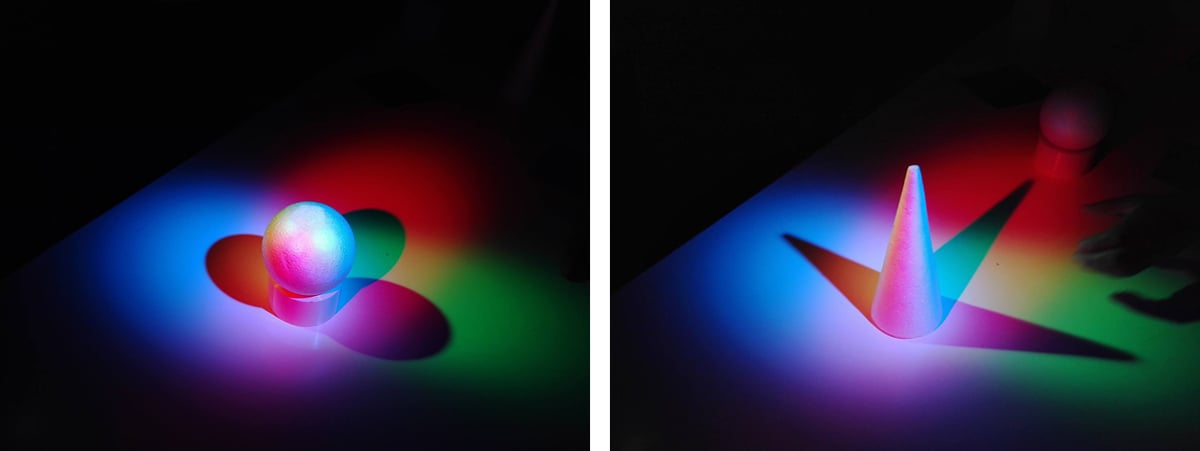
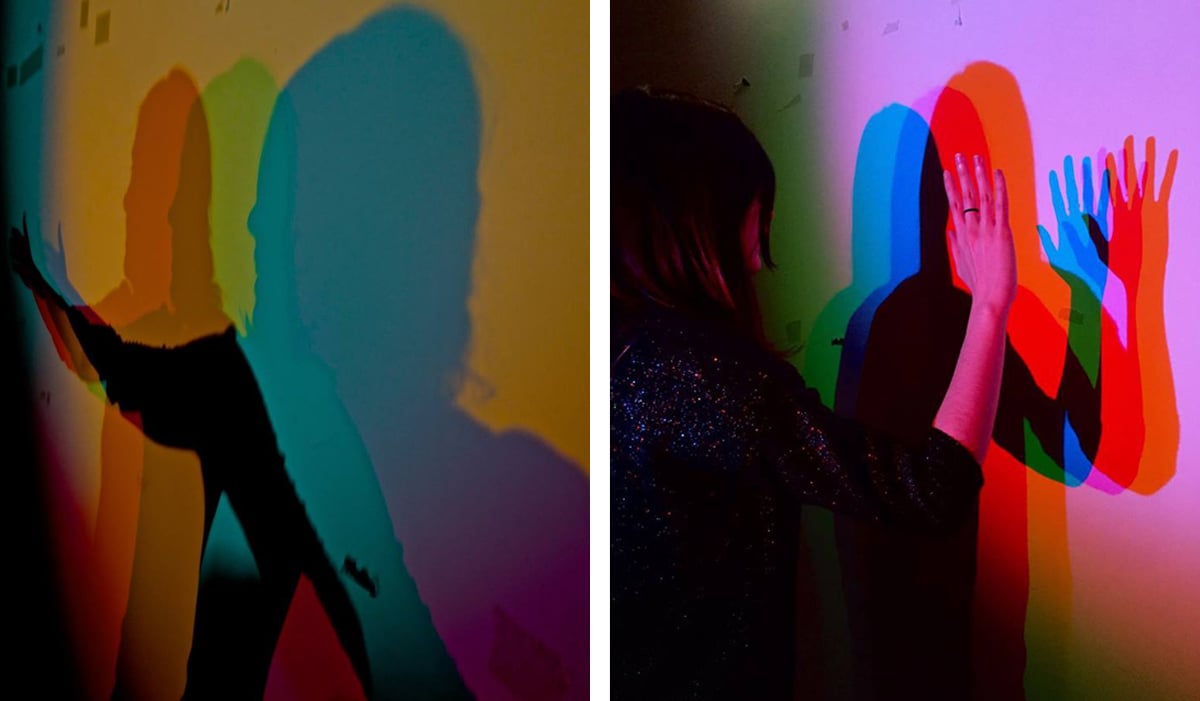 Some of the more magical and playful moments occurred when Nobili demonstrated how light and colour interacts in the real world. By lighting objects using all three of the Red, Green and Blue primary colours, he was able to explain how the shadows created are rendered in their complementary secondary colours – Cyan, Magenta and Yellow.
Some of the more magical and playful moments occurred when Nobili demonstrated how light and colour interacts in the real world. By lighting objects using all three of the Red, Green and Blue primary colours, he was able to explain how the shadows created are rendered in their complementary secondary colours – Cyan, Magenta and Yellow.
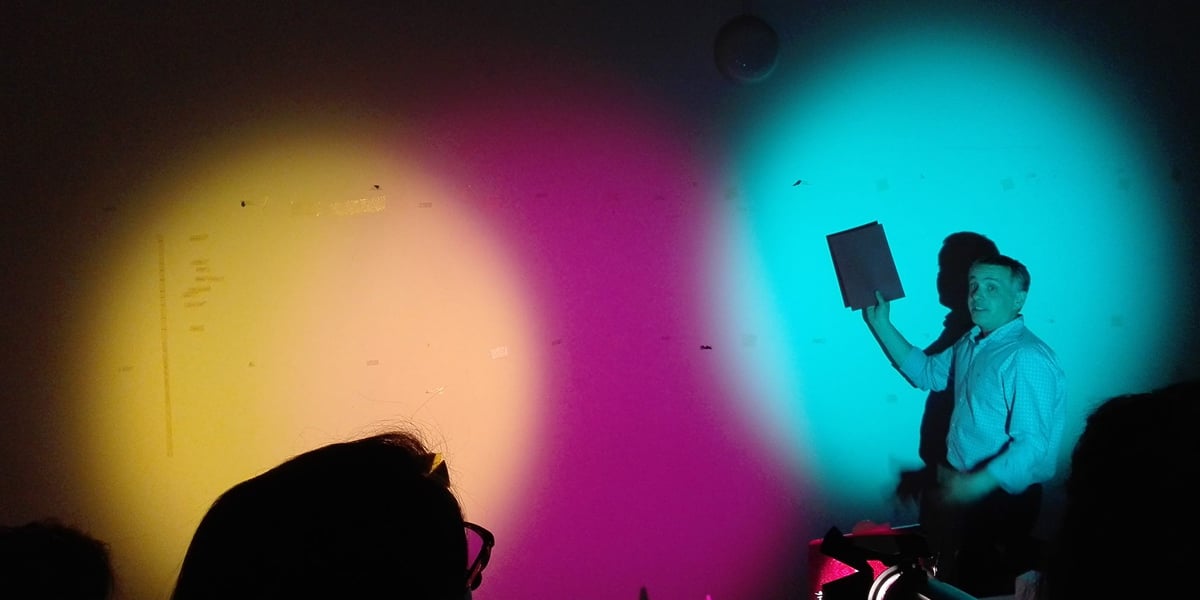 Using these basic rules of lighting and colour theory, Nobili also demonstrated how the perceived colour of an object will vary depending on the colour of the light illuminating it. Nobili hoped that by introducing the students to these concepts, they would have a deeper understanding of the effect coloured light has on our visual experience so that they could use that knowledge to discover new expressive possibilities through the manipulation and control of light.
Using these basic rules of lighting and colour theory, Nobili also demonstrated how the perceived colour of an object will vary depending on the colour of the light illuminating it. Nobili hoped that by introducing the students to these concepts, they would have a deeper understanding of the effect coloured light has on our visual experience so that they could use that knowledge to discover new expressive possibilities through the manipulation and control of light.
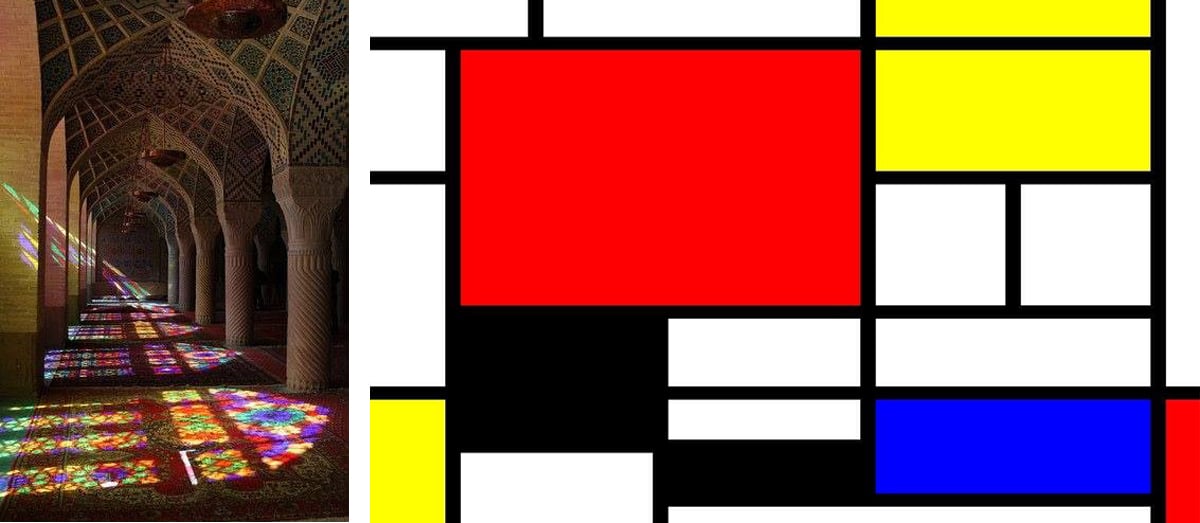 Examples of gothic stained glass windows and art from Piet Mondrian that inspired projects at the workshop
Examples of gothic stained glass windows and art from Piet Mondrian that inspired projects at the workshop
As a part of the workshop, students were given projects that were inspired by stained glass windows found in Gothic cathedrals and by artists such as Mondrian, Kandinsky, Miró and other contemporary painters. “The concept of Mondrian’s art - the use of straight lines and pure colours as a symbol of the expression of the cosmic order - make it a fascinating source of admiration,” Ezequiel comments. Using this inspiration and their newfound knowledge of colour theory, the students cut and assembled pieces of Supergel filters to create projects that allowed them to explore how coloured light works firsthand.
Project: “Atardecer” (Twilight)
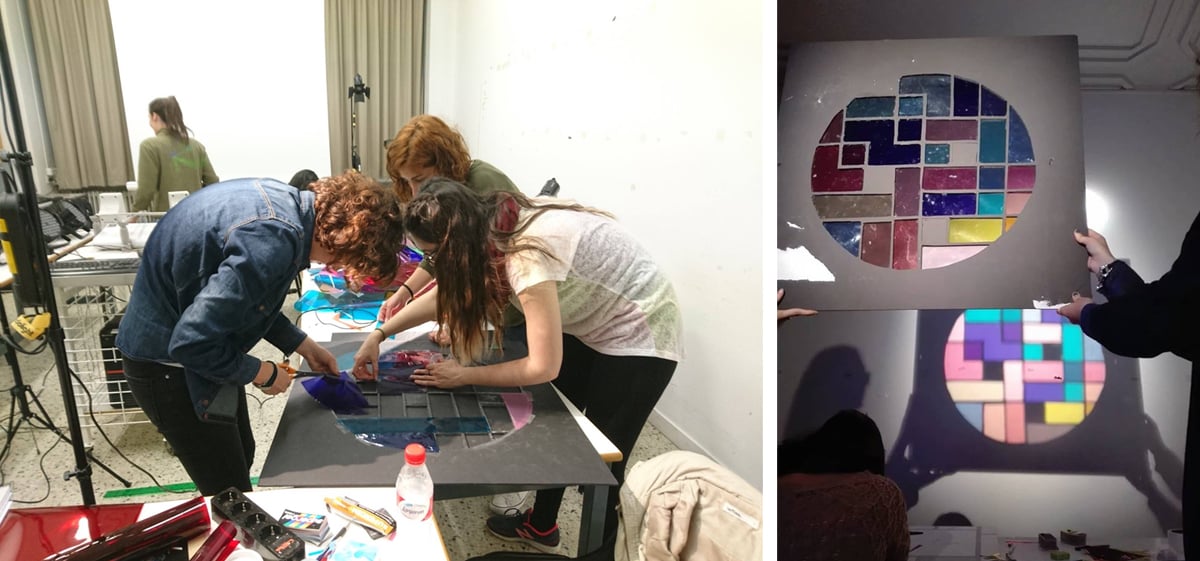 A tribute to the painter Piet Mondrian using squares and rectangles made out of Supergel filters that were fitted inside a circular frame. The work explores “the interaction of filters and the creation of new colours through subtractive colour mixture.”
A tribute to the painter Piet Mondrian using squares and rectangles made out of Supergel filters that were fitted inside a circular frame. The work explores “the interaction of filters and the creation of new colours through subtractive colour mixture.”
Project: “Paisaje Efímero” (Ephemeral Landscape)
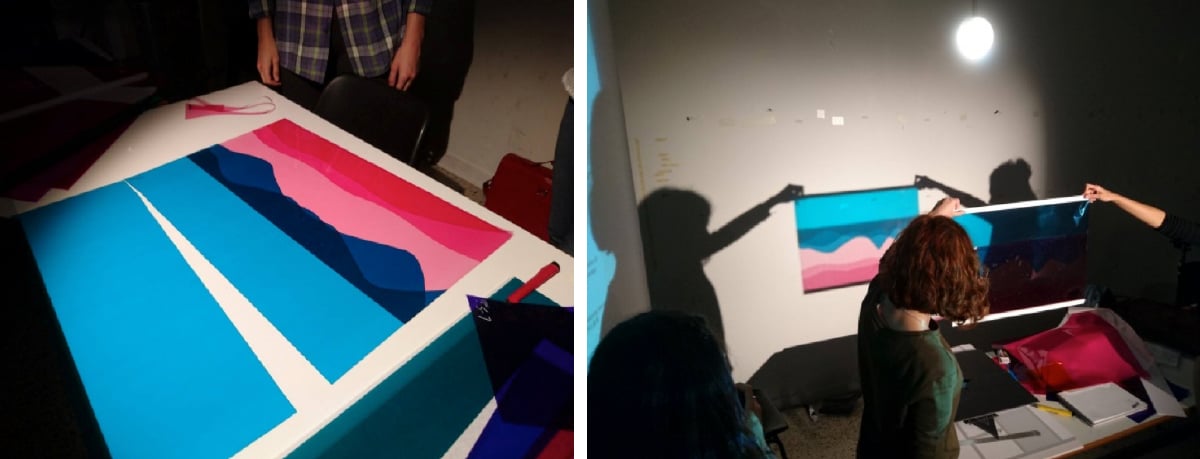 Inspired by a painter from Navarre, this project used only two types of filters, which when overlapped produced darker colours and interesting contrast.
Inspired by a painter from Navarre, this project used only two types of filters, which when overlapped produced darker colours and interesting contrast.
Project: “Luminous Triad”
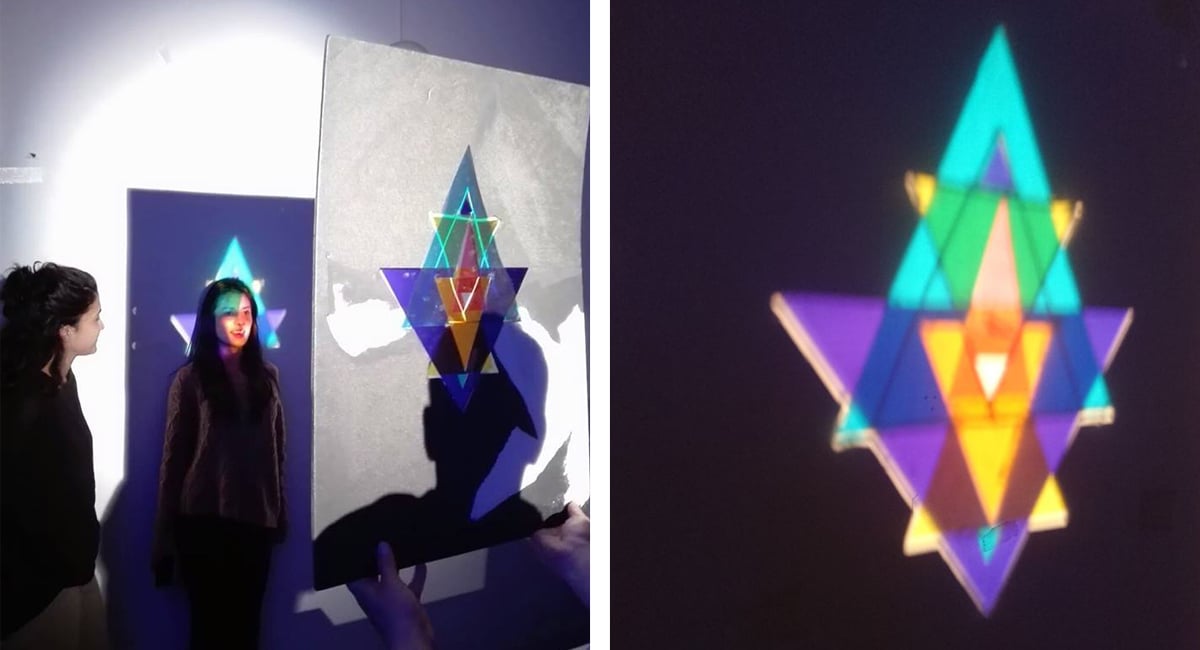 The project was comprised of complementary triads in triangular shapes allowing the superposition of filters to create new colours.
The project was comprised of complementary triads in triangular shapes allowing the superposition of filters to create new colours.
The lessons Ezequiel Nóbili taught in his workshop are applicable in almost every field of design. Whether you’re designing for the stage, a feature film, a display inside a retail store, or someone’s kitchen – the colour of the light will have a visceral impact on those that experience it. Rosco colour filters can help you choose and control the colour your design needs. Visit Ezequiel Nóbili’s website to learn more about his work. Also be sure to Explore Rosco myColor for access to our complete library of colour filters, as well as tools that will let you sort and save the colours you need by palette or by project.
Photos courtesy of Ezequiel Nóbili and the Don Lucero Facebook Page
Save
Save
Save
Save

